|
|
|
|
Children in Eswatini |
Children in Eswatini |
Children in Eswatini | Children in Eswatini |
For
facts, information, videos and photos of Eswatini/Swaziland, check out our profile pages.
More >
|
 |

One of the reasons for the current high numbers, amongst young peple in particular, is the genuine fear of HIV testing, not least their parent's and friends' reaction to a positive diagnosis together with a deep fear of having to takoe antiretrovirals (ARVs) for life and of course death itself. There is also a requirement for parental consent for testing which can lead to further already endemic physical abuse and harsh treatment by health staff at clinics that are widely identified as places you only attend to die. The HIV/AIDS pandemic has had (and is having) a devastating impact on the central tenet of life in Swaziland, the family which is headed by the father (umnumzana) whose authority is expected to be obeyed with girls taught that they are inferior to boys with a lower legal status, basically little more than children, as most families are simply disintegrating as older members die.
Education for children in Eswatini starts at the age of six with primary education (grades 1-7) comprising a seven year program culminating in the primary school examination. Secondary school then runs for five years with three years of junior secondary and two years of senior secondary although candidates must pass their Junior Certificate in order to be promotes to senior secondary. At the end of this period, children sit their Swaziland General Certificate of Secondary Education (SGCSE) and/or International General Certificate of Secondary Education (IGCSE). Successful students can then progress to tertiery education including such institutions as the University of Eswatini. Although primary level education is free in Eswatini (at least from grades 1-4), there are the inevitable 'top up fees' pushing access to that education out of the reach of many families and secondary education is expensive in the country with high drop out rates, higher for females often due to pregnancy. A great many students refuse to continue to attend because of the cultural norm of violence by teachers in the classroom (in fact Swaziland has a very high rate of child abuse in general particularly against girls and although being a signatory to all international treaties on Women’s and Children’s Rights, including the CEDAW Convention, has yet to implement them) and what they see as an irrelevance of the education they receive in a country with unemployment rates running at 25.6% of the general population and 54.8% among young people aged between 15 and 24 years. Their home is often a run down Nguni "bee-hive" hut (a rounded frame made of poles covered with thatch bound with plaited ropes) without access to running water or electricity and the majority use pit latrines for sanitation. The traditional homestead has a 'sibya' at its centre, an unroofed, fenced cattle pen and the sleeping accommodation is located on the western side. A 'indlunkulu' (great hut) is used as a shrine, dedicated to the family's ancestors ~ but only on the male side. Drinking contaminated water and using unsanitary toilets contributes to 80% of all sickness and diseases in Eswatini, claiming the lives of one in ten children under the age of 5yrs old. Most children in Eswatini have four brothers and sisters and their father may take more than one wife with each wife and children living within the family compound with the individual accommodation being separated by a fence made of reeds or similar material. There are many charities you can contact to help children in Eswatini, offering practical aid, health care, education and much more (see above). |
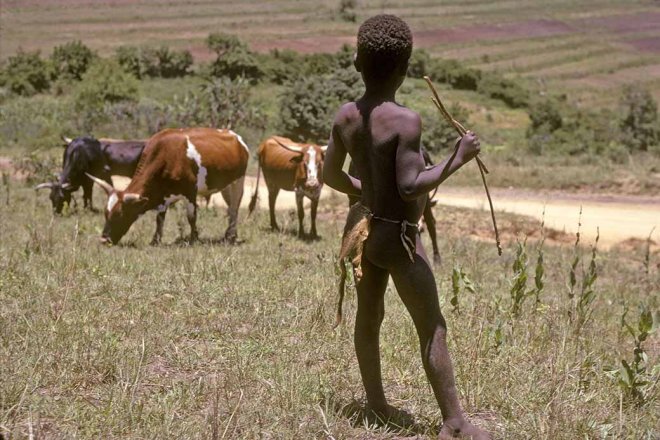
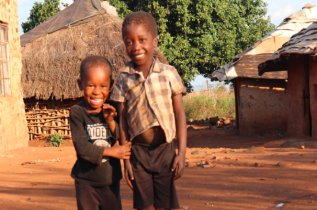

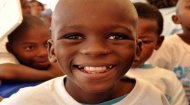




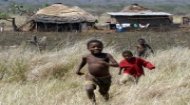

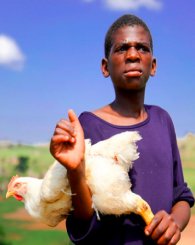 With no adults to care for them, not even extended family or neighbours, orphaned children quickly fall into deeper poverty and hunger making attending school impractical leaving themselves vulnerable to the already widespread child trafficking in Eswatini, where there is no law specifically prohibiting trafficking, with children being trafficked both internally and to other countries. For girls this mainly includes domestic servitude and sexual exploitation whilst for boys the trafficking is normally for forced labour and begging or selling in markets. Coupled with a lack of health care professionals and with 40% of all children in Swaziland suffering from chronic malnutrition, life outcomes for children are poor with a life expectancy of just 60.19 years (2019). Most children in Eswatini live in under-developed rural communities whose fathers, if alive, work on the land in subsistence farming with approximately two-thirds of utilized arable land in Eswatini under maize cultivation, the staple diet. However production is low not least because of the limited availability of water for irrigation mainly attributed to increasingly sparse rainfall.
With no adults to care for them, not even extended family or neighbours, orphaned children quickly fall into deeper poverty and hunger making attending school impractical leaving themselves vulnerable to the already widespread child trafficking in Eswatini, where there is no law specifically prohibiting trafficking, with children being trafficked both internally and to other countries. For girls this mainly includes domestic servitude and sexual exploitation whilst for boys the trafficking is normally for forced labour and begging or selling in markets. Coupled with a lack of health care professionals and with 40% of all children in Swaziland suffering from chronic malnutrition, life outcomes for children are poor with a life expectancy of just 60.19 years (2019). Most children in Eswatini live in under-developed rural communities whose fathers, if alive, work on the land in subsistence farming with approximately two-thirds of utilized arable land in Eswatini under maize cultivation, the staple diet. However production is low not least because of the limited availability of water for irrigation mainly attributed to increasingly sparse rainfall.


